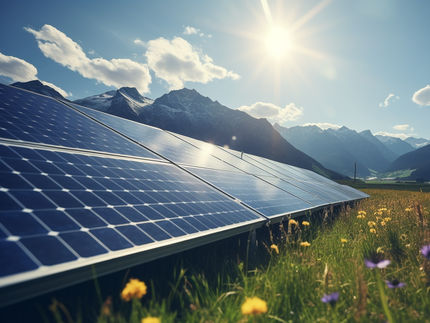Unravelling the secrets of artificial photosynthesis
Junior research group led by Dr Jacob Schneidewind launches new project on hydrogen production
"Our common goal is to develop artificial chloroplasts and use them to perform photosynthesis in order to produce hydrogen," says Dr Jacob Schneidewind from Friedrich Schiller University Jena. The idea is to utilize as broad a light spectrum as possible and to use inexpensive starting materials. The chemist conducts research at the Center for Energy and Environmental Chemistry Jena (CEEC Jena) at Friedrich Schiller University. His new research project "Two-photon water splitting for the realization of coupled photocatalysis" is being funded by the German Research Foundation with 325,000 euros. The project is part of the collaborative research centre and research network "CataLight", which is coordinated at the Universities of Jena and Ulm. The project will start in July 2024.
Producing hydrogen with the help of sunlight
"In the leaves of green plants, several molecules always interact with each other in the process of photosynthesis," says Jacob Schneidewind. However, these molecules first have to find each other. In the constructed "leaves", the molecules should therefore be arranged in such a way that the search for a reaction partner is no longer necessary. Jacob Schneidewind refers to this as the pre-organization of the molecules in the reactor. The aim is to use customized polymers for the reaction that generate this pre-organization. His research group benefits from collaborations within the "CataLight" research network.
Plants produce high-energy sugar compounds with the help of sunlight. In their leaves, the elements manganese, calcium and magnesium are involved in this process. Artificial photosynthesis, on the other hand, involves splitting water into hydrogen and oxygen. To date, the precious metal ruthenium has been used as a catalyst in the reactors. However, because ruthenium is rare and expensive, Jacob Schneidewind and his team of seven scientists want to replace it with alternative materials such as iron. Iron would be cheap and readily available.
At the same time, the aim is to expand the spectrum of light that serves as an energy source during the reaction. Often only UV light is used, which represents but a small part of the solar spectrum. "The idea is to utilize the different ranges of light simultaneously," says Schneidewind. t would then be conceivable to use systems in which water flows through polymer films behind glass that are exposed to sunlight. The rising hydrogen would then only have to be collected.
While this sounds simple, it is complicated to realize. In other words: "When it comes to photosynthesis, plants have a head start of around three billion years," says Jacob Schneidewind. That's how long ago simple single-celled organisms began to solve their energy problems in this elegant way. The intricacies of this process must now be further deciphered in order to create an efficient source of energy.
Other news from the department science
Most read news
More news from our other portals
See the theme worlds for related content
Topic world Synthesis
Chemical synthesis is at the heart of modern chemistry and enables the targeted production of molecules with specific properties. By combining starting materials in defined reaction conditions, chemists can create a wide range of compounds, from simple molecules to complex active ingredients.

Topic world Synthesis
Chemical synthesis is at the heart of modern chemistry and enables the targeted production of molecules with specific properties. By combining starting materials in defined reaction conditions, chemists can create a wide range of compounds, from simple molecules to complex active ingredients.






























































